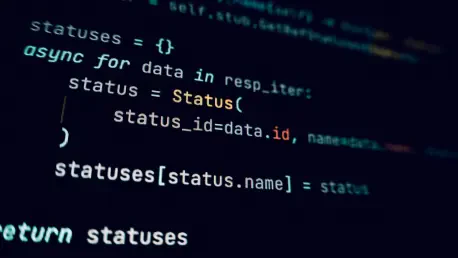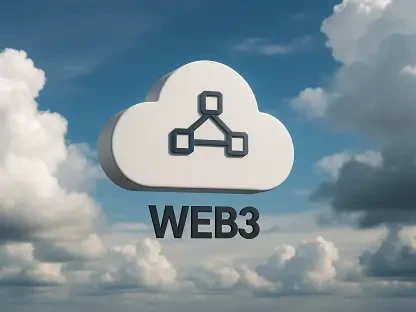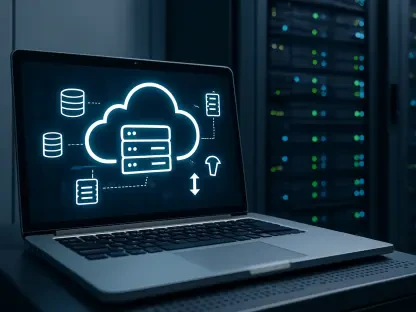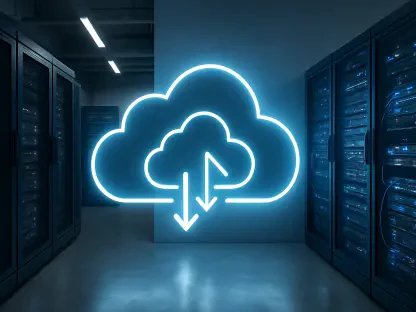In an era where technological advancements drive competitive edges, it’s alarming to see countless enterprises tethered to outdated versions of Python, a programming language central to modern software development. A striking statistic from JetBrains’ annual Python Developers Survey reveals that 83% of organizations are operating on versions at least a year old, signaling a profound lag in adopting critical updates. This hesitation isn’t merely a technical quirk; it represents a significant missed opportunity for enhanced performance, cost savings, and developer productivity. While newer releases like Python 3.11, 3.12, and 3.13 offer transformative benefits, many companies remain anchored to older iterations, often due to complacency or perceived risks. This growing divide between available innovation and actual implementation raises urgent questions about the barriers holding enterprises back and the potential consequences of ignoring these advancements in a fast-evolving digital landscape.
The Cost of Sticking with Outdated Python
Understanding the Adoption Lag
The reluctance to upgrade Python versions among enterprises is a pervasive issue, underscored by JetBrains’ finding that a staggering 83% of organizations are using outdated releases. This statistic paints a picture of widespread inertia across industries, where the comfort of familiarity often trumps the allure of innovation. Many companies express satisfaction with their current setups, with over half of survey respondents indicating that their existing Python version meets all necessary requirements. This contentment, however, masks a critical oversight: the substantial improvements newer versions bring to the table. Beyond satisfaction, a quarter of respondents cite a lack of time as a primary barrier, suggesting that upgrade initiatives are often deprioritized amid packed schedules and competing operational demands. This trend reflects a broader caution in technology adoption, where maintaining the status quo feels safer than navigating the uncertainties of change, even when the potential benefits are well-documented and significant.
Delving deeper into this adoption lag, it becomes evident that organizational culture plays a pivotal role in perpetuating the use of older Python versions. Development teams frequently operate under tight constraints, where stability is prized over experimentation. The survey highlights a pragmatic stance among many enterprises, with a significant portion unwilling to allocate resources to what they perceive as non-critical updates. This mindset is compounded by a lack of awareness about the cascading effects of outdated software on long-term efficiency. While short-term reliability might seem assured, the hidden drawbacks—such as slower processing speeds and higher resource consumption—gradually erode competitive advantages. Moreover, the absence of a clear upgrade strategy in many organizations exacerbates the issue, leaving teams without a roadmap to transition to newer versions. This gap between perceived adequacy and actual potential underscores a critical disconnect that continues to hinder progress in software development environments.
Performance Gains Waiting to Be Claimed
The benefits of upgrading to newer Python versions are not merely incremental but transformative, offering compelling reasons for enterprises to reconsider their stance. Releases such as 3.11, 3.12, and 3.13 deliver remarkable performance improvements, with speed increases ranging from 11% to a staggering 42% for users moving from older versions like 3.10. Additionally, memory usage reductions of 10-30% present significant cost-saving opportunities, especially in cloud computing environments where resource efficiency directly impacts expenses. These advancements mean faster development cycles and lower operational overheads without requiring any changes to existing code. Such gains are particularly crucial in high-stakes industries where every second of processing time matters. Despite these clear advantages, the uptake remains disappointingly low, with only a small fraction of enterprises leveraging the latest releases to optimize their workflows and infrastructure.
Modern development practices, such as containerization with tools like Docker, offer a practical solution to ease the transition to newer Python versions, yet their adoption is surprisingly limited. Containerization isolates applications from underlying system dependencies, minimizing the risk of conflicts and enabling teams to test and deploy updates in controlled environments. This approach should theoretically reduce the friction associated with upgrades, allowing enterprises to experiment with versions like 3.13 without jeopardizing existing systems. However, JetBrains’ survey indicates that many organizations fail to capitalize on this flexibility, often due to unfamiliarity with containerization tools or a lack of internal expertise. This underutilization points to a broader gap between available technological solutions and their practical implementation, suggesting that technical barriers are only part of the equation. Cultural resistance and insufficient training further complicate the adoption of these enabling technologies.
The performance gains of newer Python versions extend beyond raw speed and memory efficiency, impacting developer productivity in meaningful ways. Upgraded versions often include enhanced language features and optimizations that streamline coding tasks, reducing the time spent on debugging and testing. For instance, faster runtimes translate to shorter feedback loops during development, enabling teams to iterate more quickly and deliver solutions faster. In cloud-based setups, where costs scale with resource usage, the memory savings from newer releases can lead to substantial financial benefits over time. Yet, despite these compelling incentives, the majority of enterprises remain hesitant, often overlooking how these improvements could address pain points in their current workflows. This disconnect between potential and practice highlights a critical need for better education on the tangible impacts of staying current with Python advancements, especially in resource-intensive and time-sensitive projects.
Barriers to Upgrading and Missed Opportunities
Psychological and Operational Hurdles
A significant barrier preventing enterprises from upgrading Python versions lies in the deeply ingrained risk-averse mindset that dominates many development teams. The philosophy of “if it isn’t broken, don’t fix it” often guides decision-making, with teams prioritizing stability over the potential for innovation. Experts in the field note that the fear of regressions or disruptions during upgrades can be paralyzing, leading organizations to stick with familiar, albeit outdated, versions. This caution is not without merit, as transitioning to a new release can introduce unforeseen compatibility issues or require reworking existing codebases. However, this reluctance frequently overshadows the long-term efficiency gains that come with newer Python iterations. The inertia within teams, coupled with a lack of urgency from leadership, perpetuates a cycle of stagnation, where the comfort of the known outweighs the promise of enhanced performance and productivity.
Operationally, the challenges of upgrading are compounded by resource constraints and competing priorities within enterprises. Development teams are often stretched thin, juggling multiple projects while maintaining existing systems under tight deadlines. Allocating time and personnel to manage an upgrade process can seem like an unnecessary burden, especially when current Python versions appear to function adequately. Additionally, the perceived complexity of migrating large, legacy systems to newer releases deters action, as teams anticipate significant downtime or retraining needs. This operational friction is further intensified by a lack of clear incentives or mandates from upper management to prioritize updates. Without a strategic push to modernize, the default response is to delay upgrades indefinitely, missing out on optimizations that could alleviate some of the very pressures teams face. Addressing these hurdles requires a shift in perspective, viewing upgrades not as disruptions but as essential investments in future-proofing technology stacks.
Hidden Costs of Inertia
The consequences of clinging to outdated Python versions extend far beyond mere technical inefficiencies, seeping into the realm of developer productivity and workflow delays. Slower runtimes inherent in older releases create prolonged feedback loops during development cycles, forcing teams to wait longer for builds and tests to complete. This lag not only frustrates developers but also slows down the pace of innovation, as iterations take longer to refine and deploy. In environments where agility is paramount, such delays can erode competitive edges, leaving enterprises struggling to keep up with more adaptable peers. Furthermore, the absence of modern language features in older versions means developers must often resort to workarounds or manual processes that newer releases could automate. This hidden toll on efficiency underscores how the decision to postpone upgrades impacts not just systems but the people who rely on them daily for critical tasks.
Financially, the cost of inertia is equally significant, particularly for enterprises operating in resource-intensive environments like cloud computing. Older Python versions, with their higher memory usage and slower execution speeds, directly contribute to inflated operational expenses as they demand more computing power to achieve the same results. Memory reductions of 10-30% offered by newer releases could translate into substantial savings on cloud bills, yet many organizations fail to seize this opportunity. This oversight is akin to leaving money on the table, as the expenses accumulate over time, silently draining budgets that could be redirected to strategic initiatives. By not upgrading, companies inadvertently increase their cost base while diminishing their ability to scale efficiently. Reflecting on past decisions, it’s evident that many enterprises underestimated these hidden costs, allowing short-term convenience to overshadow the long-term fiscal benefits of embracing newer Python versions for optimized performance.









